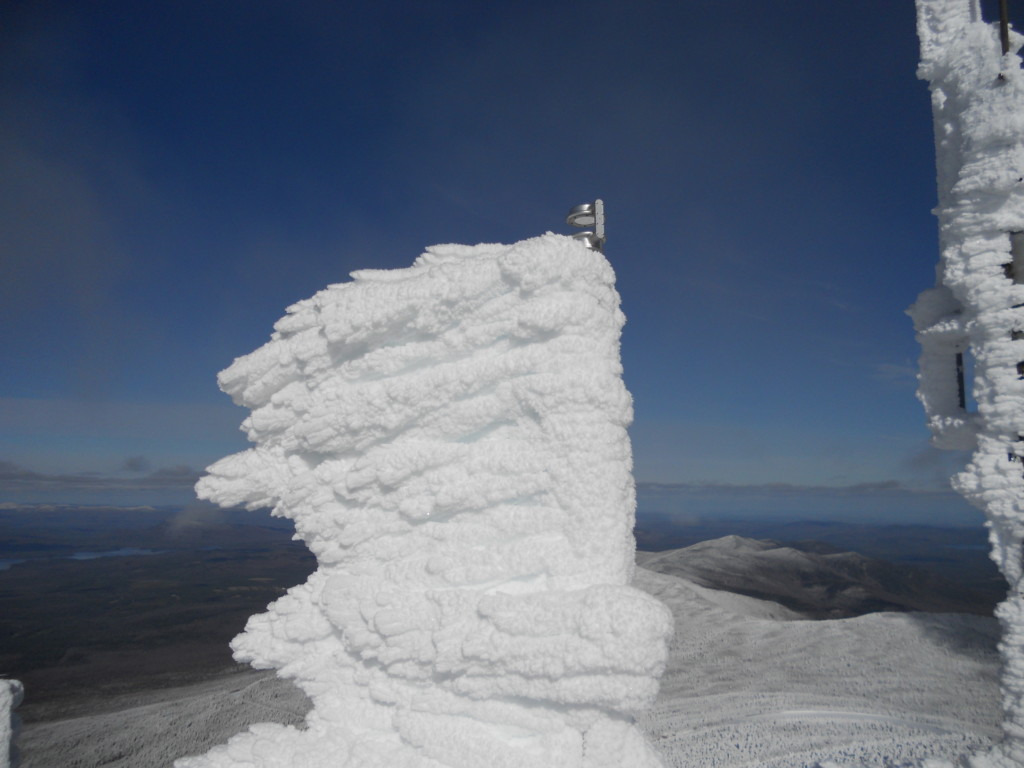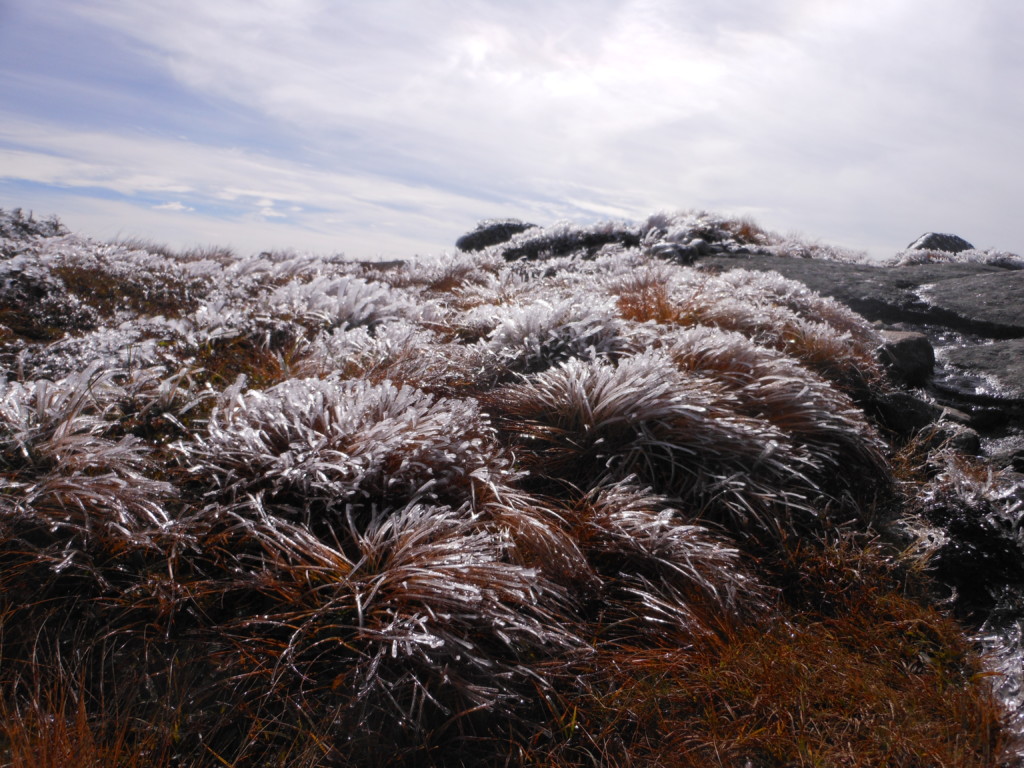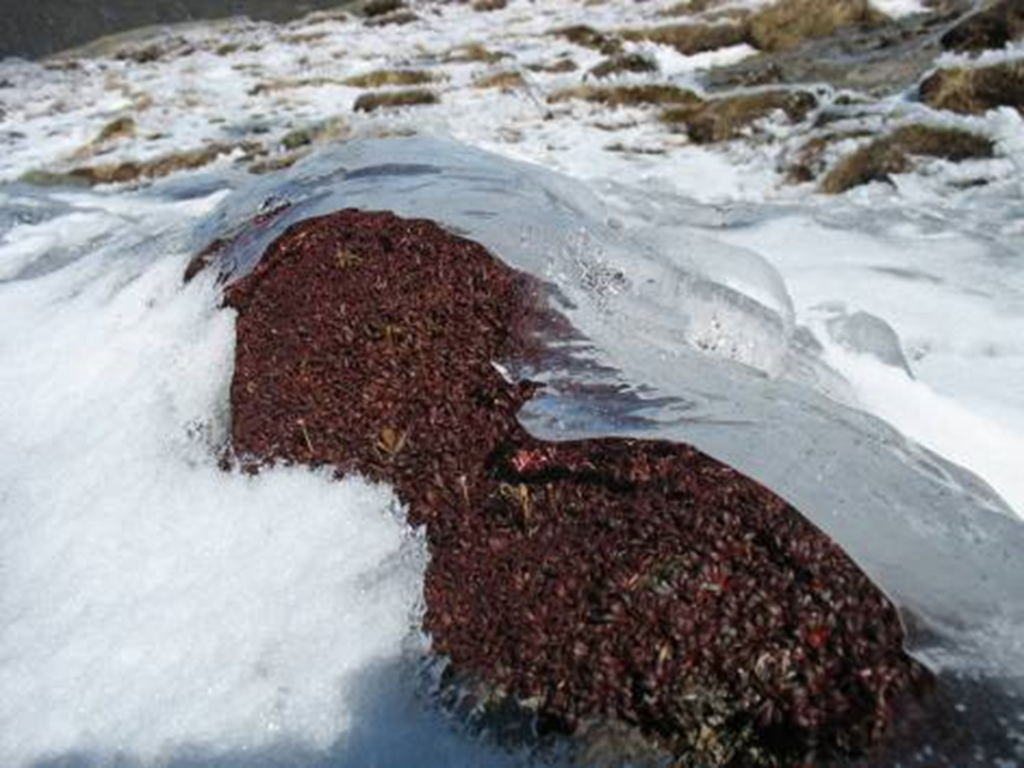How Winter Shapes the Alpine Zone
How Winter Shapes the Alpine Zone
New York’s alpine zone is a dangerous, gripping, and magnificent place. Above this treeless landscape you are exposed to the elements: ripping wind, slippery ice, and snow that could come up to your boots in one section of trail and up to your waist in another. It is also home to specially adapted arctic tundra plants where humans are, unsurprisingly, brief visitors. Let’s take a look at how these harsh winter conditions shape the alpine zone, making it an environment that only tundra plants can survive.
Wind
- Whiteface, New York’s fifth tallest peak, has recorded wind speeds at 150 mph! Alpine plants endure hurricane force winds (74 mph) every month of the year. The highest wind speeds (>100 mph) are primarily in the winter. These fast winds pick up snow and ice particles and blast any vegetation that is exposed above the snow pack, shredding leaves and desiccating plants.
- Wind also causes the temperature to drop. Wind chill can get below -100° F in the winter!
Ice
- Alpine plants have only about 60 days frost free and snow can fall every month of the year on the summits. The harsh conditions created by wind and ice keeps treeline growth at bay.
- Needle ice is frost heave that occurs when fine grained soils have an abundant supply of water. When the temperature goes below freezing, ice grows in columns perpendicular to the ground. It is most commonly seen near trails, summits, and stream beds where there is exposed soil and little to no vegetation. Needle ice can cause seedling death and soil instability.
- Rime ice occurs when water droplets in the air freeze onto a surface. Rime ice builds into the wind and accumulates 3-6 inches an hour! Krummholz, the forest ecosystem just below the alpine zone, gets its flagging from branches on the windward side accumulating rime ice and becoming so heavy that they break off.
Snowpack
- The Diapensia community (consisting of Diapensia, Lapland Rosebay, and Alpine Azalea) survives on the harsh windward side of the mountain where the snow is swept clean and vegetation is left mostly exposed. A natural cycle of succession occurs in mats of Diapensia where needle ice damage, death, and seedling growth occurs. These true arctic tundra plants bloom in the beginning of June right after thawing out of the snow and ice.
- The snowbed community is on the most protected leeward side of the mountain with the deepest snow cover. A mixture of low elevation and alpine plants survive and thrive in this sheltered microhabitat. Beneath the snow, the temperature is considerably higher than the air temperature and fluctuates very little since the ground is not exposed to strong sunlight in the day and freezing temperatures at night. These plants are the last to thaw out of the insulating snow and therefore bloom later in the season (July and August).
Alpine vegetation can get damaged even during the winter! Please stay on the bedrock and off of fragile alpine vegetation in all seasons. Make sure that you have all the necessary gear (snowshoes, microspikes, and crampons) to safely traverse these icy summits. Your donation today can help us continue to care for this fragile alpine vegetation.

Photo Credit: Paul Casson


Summit stewards educate hikers to enlist their help in protecting alpine species from trampling. From Victoria Day to Columbus Day every year, they hike to the summits of the tallest mountains every day and speak with every visitor about protecting alpine plants from human trampling by staying on the solid rocks. Thank you to the donors and partners who make the Adirondack High Peaks Summit Stewardship Program possible.
Related
ADK Rebuilds Vandalized Wright Peak Cairns
On September 15, 2025, nearly every rock cairn above treeline on Wright Peak was destroyed. […]
The Summit Stewardship Program: Leading the Way in Visitor Use Management
In the 1990s, the summit stewards working on Mount Marcy had a problem. The Summit […]
Summit Stewards Reflect on 2023 Season
November 6, 2023 — Lake Placid, NY — In its end of season report, the […]
Extirpated Alpine Plant Discovered on Algonquin
August 29, 2023 — Lake Placid, NY — The Adirondack High Peaks Summit Stewardship Program […]

